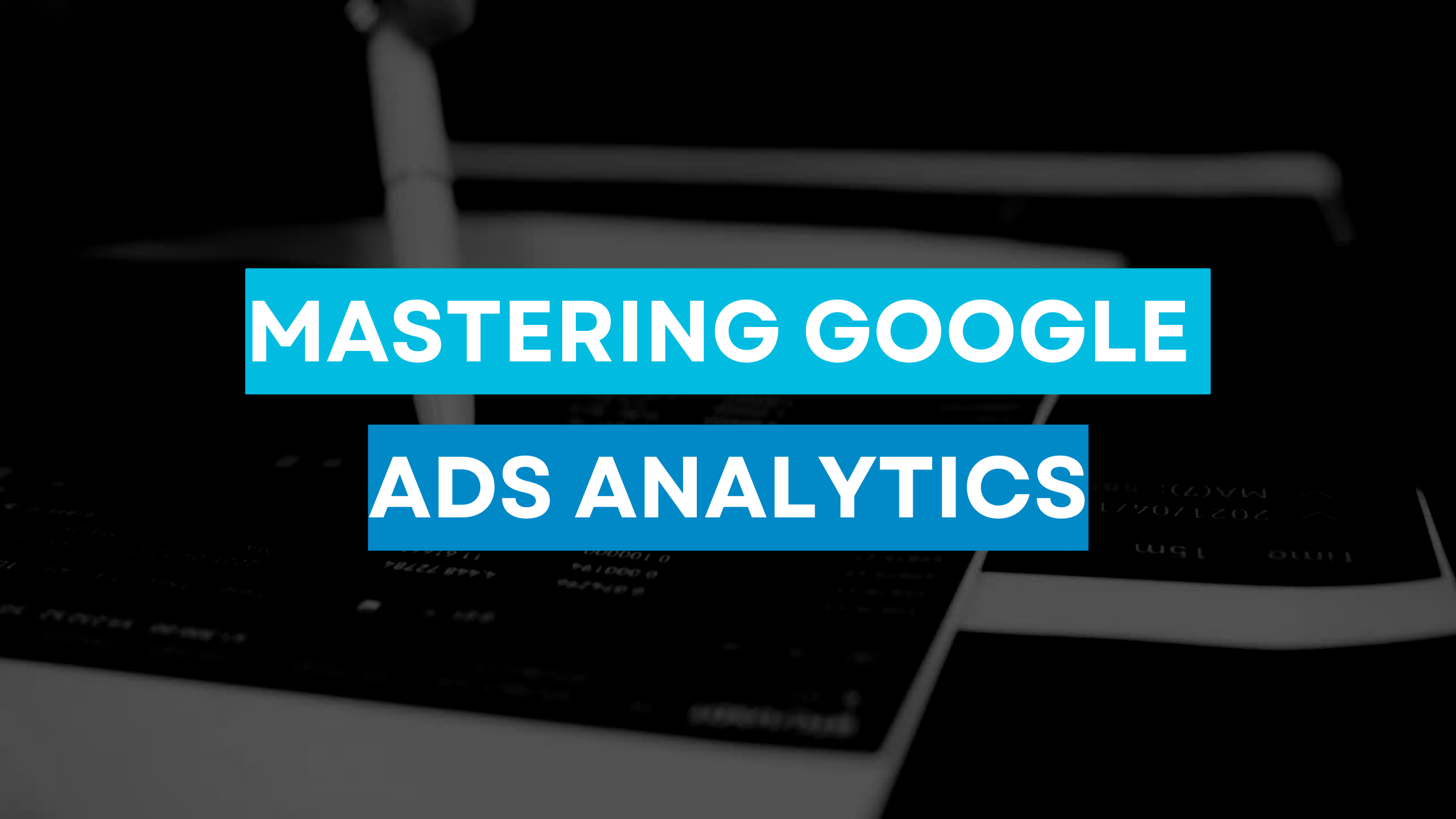Introduction: Embracing the Potential of Google Ads Analytics
In today’s digital age, successful online advertising hinges on a deep understanding of data and analytics. Google Ads, being one of the most popular advertising platforms, provides a wealth of valuable data through its analytics tools. Mastering Google Ads Analytics is not only crucial for tracking your ad performance but also for gaining insights to optimize and refine your advertising strategies. In this comprehensive guide, we will walk you through the key aspects of Google Ads Analytics, empowering you to leverage data-driven decisions to skyrocket your advertising campaigns.
1. Understanding Google Ads and Its Ecosystem
Before diving into analytics, it’s essential to grasp the fundamentals of Google Ads and its ecosystem. Google Ads, previously known as Google AdWords, is an online advertising platform developed by Google. It allows businesses to display ads on Google’s search engine results page (SERP), partner websites, YouTube, and other Google-affiliated platforms. Understanding the different ad formats and campaign options will lay the foundation for effective analytics implementation.
2. The Importance of Google Ads Analytics
Google Ads Analytics acts as a compass that guides advertisers toward success. By delving into the data, you can measure ad performance, identify user behavior, and understand what resonates with your audience. This information is invaluable for refining ad targeting, optimizing budgets, and improving the overall return on investment (ROI) of your advertising efforts.
3. Navigating Google Ads Analytics Dashboard
Upon logging into your Google Ads account, you’ll have access to a treasure trove of data presented in the Analytics Dashboard. From click-through rates (CTR) to conversion metrics, the dashboard offers a comprehensive overview of your campaign’s performance. Familiarize yourself with this interface to uncover actionable insights promptly.
4. Key Metrics to Monitor
To make the most of Google Ads Analytics, you must focus on specific metrics that directly impact your campaign’s success. These metrics include:
– Click-Through Rate (CTR)
– Conversion Rate (CR)
– Cost Per Click (CPC)
– Return on Ad Spend (ROAS)
– Quality Score
– Bounce Rate
– Impression Share
Understanding these metrics and their interplay will enable you to gauge the effectiveness of your ads accurately.
5. Setting Up Conversion Tracking
Conversion tracking is the backbone of Google Ads Analytics. It allows you to measure the actions that matter most to your business, such as form submissions, purchases, or sign-ups. Properly setting up conversion tracking ensures you can attribute revenue to specific ads and keywords, helping you identify high-performing campaigns.
6. Utilizing Segmentation for Deeper Insights
Segmentation allows you to slice and dice your data to gain deeper insights. By segmenting your data based on various parameters such as demographics, devices, or locations, you can identify valuable patterns and trends. This information can lead to highly targeted campaigns that resonate with specific audience segments.
7. Leveraging Google Analytics Integration
Integrating Google Ads with Google Analytics opens up a whole new realm of possibilities. Google Analytics provides in-depth website data, user behavior insights, and valuable audience information. By combining the power of both platforms, you can refine your targeting, understand user journeys, and make data-driven decisions that go beyond advertising.
8. A/B Testing for Continuous Improvement
A/B testing, also known as split testing, is an essential practice to optimize your ads continually. By creating variations of your ads and comparing their performance, you can identify winning combinations that yield the best results. A/B testing should be an ongoing process, ensuring your advertising efforts are always evolving and improving.
9. Implementing Remarketing Strategies
Remarketing is a powerful technique to re-engage users who have previously interacted with your ads or website. By using Google Ads Remarketing, you can target these past visitors with tailored ads, reminding them of your offerings and increasing the likelihood of conversions.
10. Budget Optimization with Google Ads Analytics
Data-driven budget optimization is crucial for making the most of your advertising budget. Google Ads Analytics allows you to identify high-performing campaigns, keywords, and audience segments. By reallocating your budget to these successful areas, you can maximize your ROI and minimize wasted ad spend.
Conclusion: Empowering Success with Google Ads Analytics
Mastering Google Ads Analytics is a journey that can transform your advertising campaigns. By understanding the data, measuring key metrics, and leveraging valuable insights, you can fine-tune your strategies for optimal performance. Embrace the power of data and let Google Ads Analytics be the driving force behind your advertising success. As the digital landscape evolves, your commitment to harnessing the potential of analytics will keep you ahead of the competition and drive your business to new heights.
